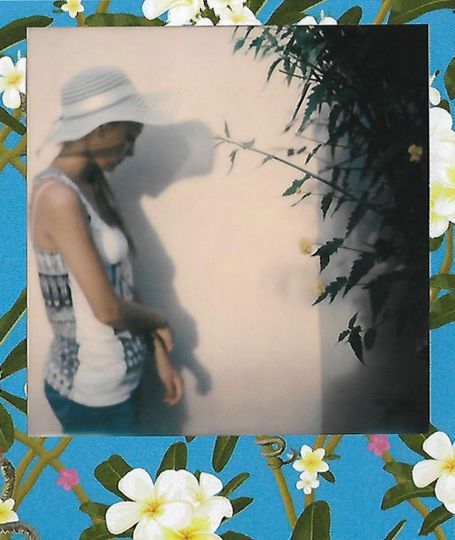William Guilmain is a thirty-four-year-old photographer based in Montepellier, and also a biologist. The recurrent themes in his work explore the place of human beings in nature as well the connections, however distant or close, between the two. He is currently showing two series of photographs, titled Cosmos and The Edges of the World, grouped under the collective heading Par-delà l’horizon. The exhibition is on view at Bar à photo in Montpellier until May 6. In addition, Guilmain’s The Edges of the World has been shortlisted by the jury of the Le Printemps des photographes festival in Sète (May 24–June 10).
Could you briefly describe the two series and explain the connection between them?
There is a common denominator, a connection, and it’s the relationship with nature. Although they represent different aesthetics, the two series are both about healing through nature. The series Cosmos draws on my own life. I was raised in nature, in Lorraine, near the Vosges Mountains. I spent my childhood building cabins, gathering mushrooms… Unlike today’s youth, I had no video games or any of the electronics. This left a mark. As a grownup, I followed a career path like everyone else, built city connections. At a certain point in my life [in Spring 2015], I began to feel a sense of longing. I had a visceral need to return to nature. The title [of the series] comes from a book by Michel Onfray I was reading at the time, Cosmos, where the author explains that humans moved from a state in which they were a part of nature to a state in which they are separated from that primal element (by philosophy, technology…). What this series of photographs is trying to do is to talk about the void in the human heart, since we are born in nature, but are torn away from it, and then we try to fill this void by acquiring things.
Do you think it’s possible to practice meditation by way of photography? Is there a meditative aspect to your images?
Indeed, since meditation is contemplation, poetry of the moment, it makes it possible to live in the moment. Photography does the same thing. I am incapable of shooting a picture point blank. I am neither a thief nor hunter of images. I need to let go, walk, sometimes for hours, until I feel I am one with the environment, before I can start photographing. This is consistent with the spirit of meditation.
You used to write poetry before doing photography. Do you think that an image is capable of expressing more than words?
This is why I turned towards photography…. I used to read a lot of Romantics (Rousseau, Chateaubriand….), and then I read Raymond Depardon’s Errance. In this book, he combines both: he is a superb wordsmith and a sublime photographer. From that moment, I began taking photographs. And the more I photographed, the less I wrote, as in communicating vessels.
Words are imperfect, not powerful enough, they may be interpreted and understood in different fashions. Images may be loud and make much noise. Photography is a silent cry.
Interview conducted by Marion Moret
Marion Moret is a journalist based in Marseilles, France.
William Guilmain, Par-delà l’horizon
Until May 6, 2017
Bar à photo
29ter rue Lakanal
34090 Montpellier
France
https://fr-fr.facebook.com/Baraphoto.montpellier/
24 mai au 11 juin 2017
Festival “Le printemps des photographes”
Atelier Galerie Hernan Torres
40 rue Pierre Sémand
34200 Sète
France


















